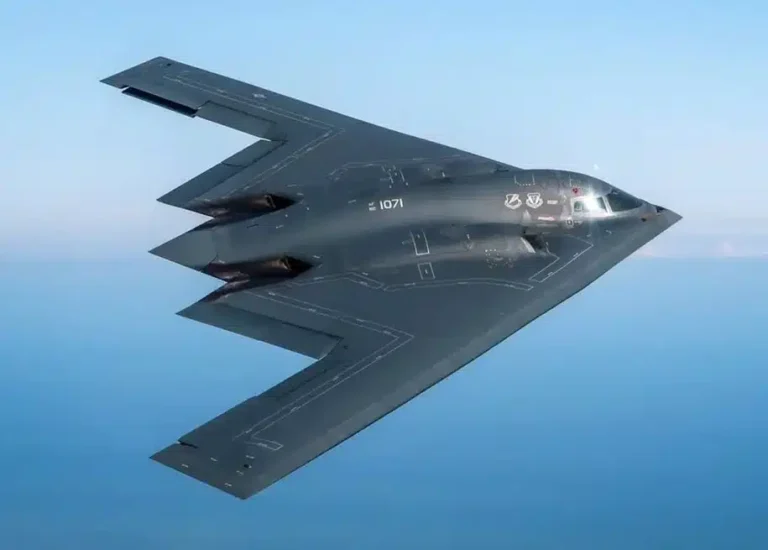The B-2 Spirit bomber has captured global attention after flying 37 hours non-stop from the United States to carry out a targeted mission in Iran. This unique aircraft, often called a “ghost” in the sky for its silent and radar-proof design, is said to be so expensive that building just one costs as much as constructing a major bridge.
Built for stealth and long-range attack, the B-2 Spirit is the most advanced bomber in America’s military fleet. It can fly high above the ground, move without making much noise, and avoid radar detection. These features make it nearly impossible to track during missions.
During its recent mission, the B-2 bomber flew a long route while receiving fuel in the air. It aimed at Iran’s underground nuclear center, a site considered nearly impossible to attack using regular fighter jets. Experts say that no other aircraft in the world has the power to hit such deeply protected sites except the B-2.
This American stealth bomber was inspired by the shape and movement of a falcon. Its design, called a flying wing, allows it to cut through the air with little resistance. This not only increases its speed but also helps it stay hidden. Like the falcon, it can fly fast, dive without warning, and remain undetected during attacks.
One of the B-2 bomber’s main targets was Iran’s Fordow nuclear facility. Located about 262 feet underground, this site is shielded against standard attacks. To destroy such a strong target, the aircraft carried a 14,000-kilogram GBU-57 bunker-busting bomb. This heavy bomb can only be lifted and released by the B-2 Spirit, thanks to its unmatched power and design.
Because of its unique features, the B-2 has been described as both a technical marvel and a powerful tool for military dominance. It can carry both nuclear and conventional bombs and reach any location on Earth from its base in the U.S., thanks to its range of over 11,000 kilometers.
The U.S. military created the B-2 Spirit during the 1980s, working with the defense company Northrop Grumman. It was designed during the Cold War to give the U.S. an edge in case of large-scale air wars. So far, only 21 units of this aircraft have been made, due to its high production and maintenance costs.
Each B-2 bomber costs around 2.6 billion U.S. dollars, or roughly 26,000 crore rupees. This makes it the most expensive military aircraft in history. However, experts say the cost is justified by its ability to fly undetected, reach far-off targets, and deliver powerful payloads with precision.
Its use in Iran shows how seriously the U.S. takes threats to global security. Iran’s underground nuclear research centers are considered well-protected. But even the toughest defense systems cannot stop the B-2. This makes it a key weapon for any mission requiring surprise, power, and precision.
With its bird-inspired aerodynamic design, the B-2 bomber proves that nature and science can work together in shaping the future of aerial combat. It not only copies the falcon’s silent movement but also mimics its sharp and sudden strikes.
The aircraft’s flying wing structure gives it balance, speed, and stealth. It helps the plane avoid air resistance, which allows it to fly faster and stay in enemy airspace longer without detection. These qualities make it nearly unbeatable in modern-day warfare.
While the U.S. has more modern aircraft, none match the combination of stealth, strength, and flight range offered by the B-2. Its rare use makes every mission newsworthy and shows its value in high-risk, high-stakes military operations.
Despite its high cost, the B-2 remains a symbol of technological power. With only a few of these bombers in service, every flight becomes a display of force and engineering skill. The 37-hour journey from the U.S. to Iran is just one more example of how this aircraft shapes the world’s defense landscape.







